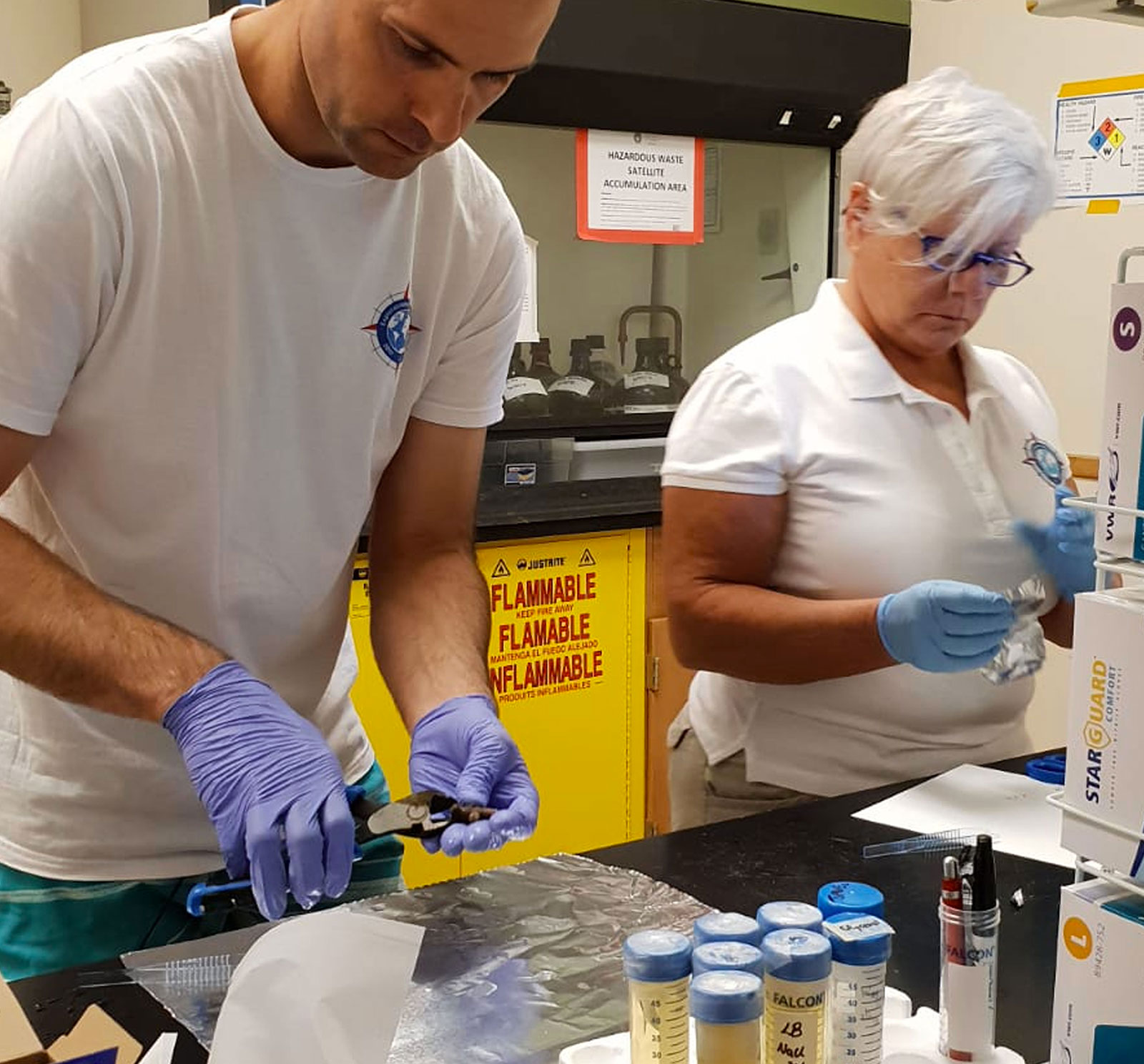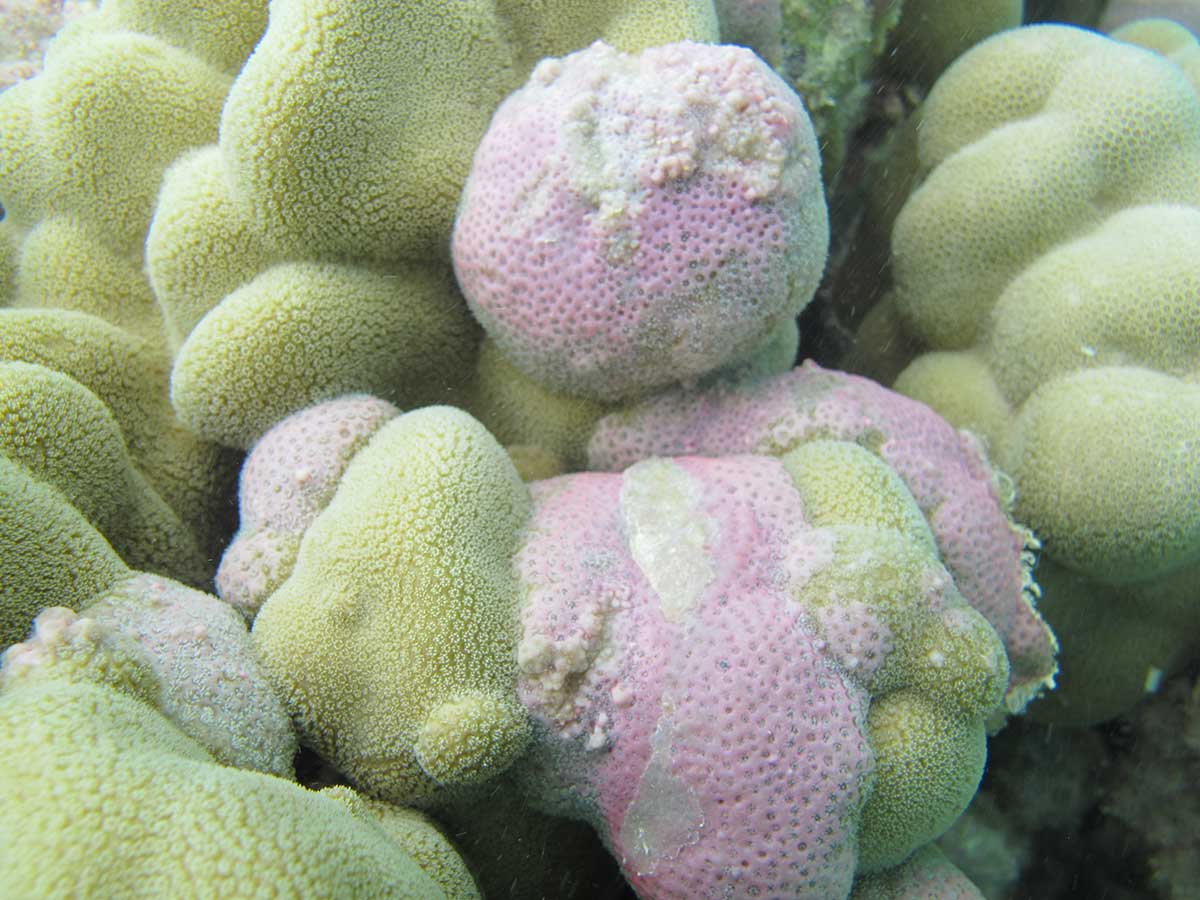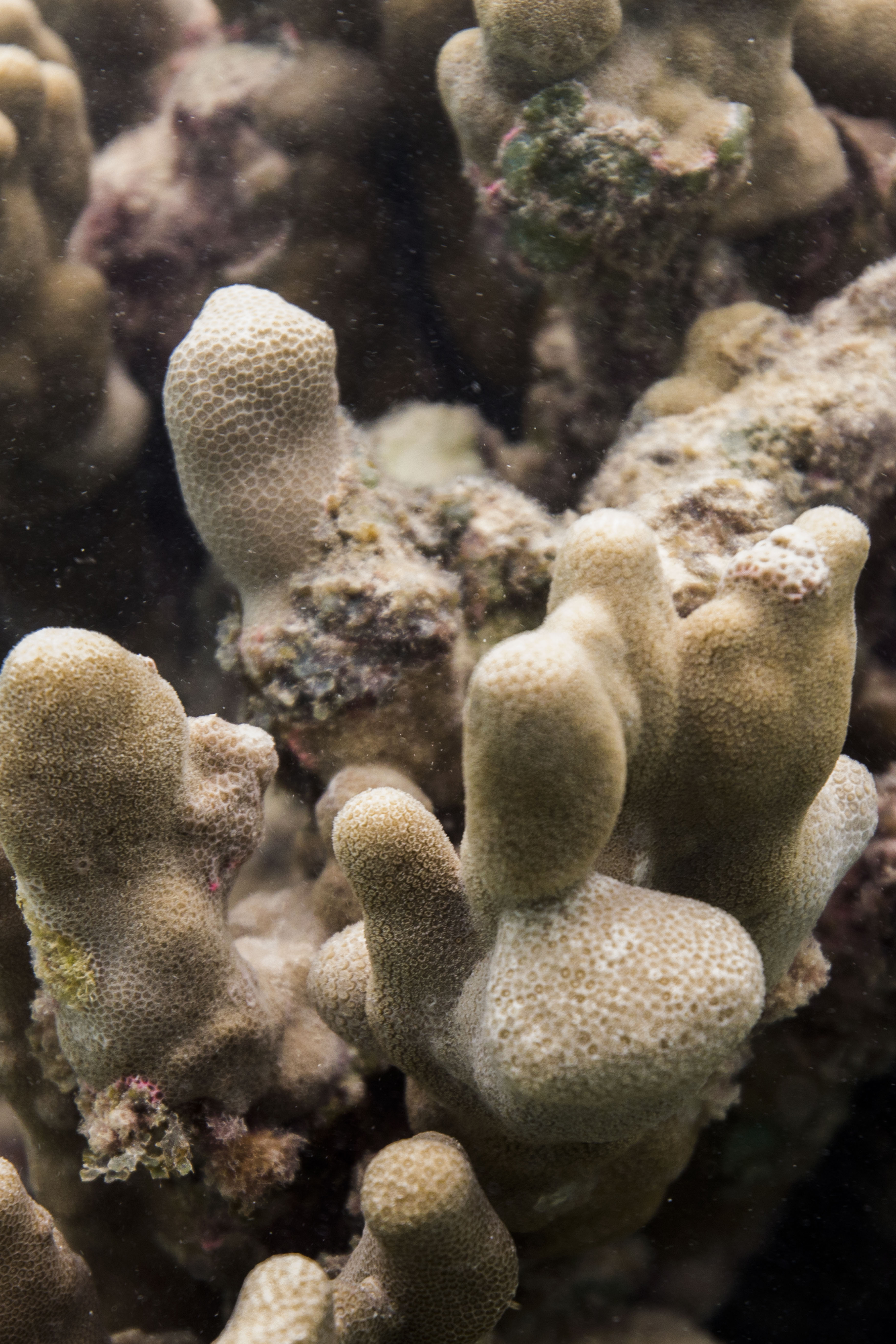From June 15 to June 25, 2018 and from November 30 to December 06, 2018
MISSION HAWAII 2018 – PACIFIC
- Bacteria, Bleaching, Corail, Sciences
Collaborative missions with the Centre Scientifique de Monaco (CSM), the Hawai‛i Institute of Marine Biology at the University of Hawaii and the Tara Foundation on the study of excrescences present on coral colonies on the reefs of the island of Moku O Lo’e.
General context
Supported by Explorations de Monaco, these two missions took place under the scientific direction of Dorota Czerucka, Director of Research, and François Seneca, Research Officer at the Centre Scientifique de Monaco.
Their aim: to sample corals showing excrescences.
On these samples, the researchers identify the bacteria present to determine their characteristics and level of pathogenicity.
If pathogenic bacteria are found, the scientists seek to identify the coral’s immune response.
These studies are helping to advance our understanding of the mechanisms of tumor cell formation in living beings in general, and are therefore of great interest to human biology.
A hypothesis
The hypothesis of this research is as follows: environmental stress (human pollution, rise in temperature, change in pH, etc.) could, in a given environment, have an impact on bacterial communities in direct contact with living organisms, including coral, which is the biological model studied here.
Depending on their level of pathogenicity, these bacteria could have harmful consequences by triggering diseases, such as outgrowths, on the organism in question.


Illness or not?
Abnormal growths affect over 40 species of scleractinian coral in the Indo-Pacific and Caribbean regions.
Although these outgrowths are sometimes referred to as tumors, their malignant nature has yet to be demonstrated.
The study of these outgrowths broadens our knowledge of coral biology.
The innate immunity of these million-year-old organisms bears close resemblance to that of humans.
Two species studied
- Porites evermanni (common name: lobe corals), colonies are massive with a tendency to form columns.
Generally mustard-colored, sometimes brown. - Porites compressa (common name: fingers corals) (branching), colonies form large plateau reefs.
Branches are cylindrical and thick.
Porites evermanni ©O.Borde_Explorations de Monaco
Porites compressa ©O.Borde_Explorations de Monaco
Location
Two species, two growths
The outgrowths (abnormal cell reproduction) are different in the two species studied.
On Porites evermanni, a pink pigment is produced by the coral, as if to protect itself against an invader.

Porite compressa is a branching coral, which means it normally grows in the shape of fingers.
Abnormal outgrowths develop into massive, easily distinguishable formations.

Sampling
A total of 140 samples were taken during the campaign.
Scientists search for coral colonies showing abnormal growth.
Each time a sample is taken, a photo is taken to document the size and GPS coordinates.
For each colony, 2 pieces are taken: a sample of healthy coral and another of abnormal coral.
The samples are then stored in separate bags, pre-labeled for healthy and abnormal samples.
The process is then repeated with a new colony.
The CSM, a multidisciplinary research facility
The CSM is a research center specializing in two key areas: medical biology and coral biology, where expertise overlaps, as is the case in the team led by Dorota Czerucka, Research Director of the Ecosystem and Immunity team.
D. Czerucka manipulating ©O.Borde_Explorations de Monaco
Hawai'i Institute of Marine Biology
The institute belongs to the University of Hawaii.
It is located on the small private island of Moku O Loʻe, also known as Coconut Island.
The island has a rich and interesting history.
To visit the island, permission and a sponsor from the University are required.
The documents must be presented to the operator of the ferryboat that provides transport to the island.
F. Seneca and D. Czerucka in the outdoor wet laboratory ©O.Borde_Explorations de Monaco
Laboratories at your disposal
Hosted by the HIMB, scientists use the laboratories at Moku O Loʻe to preserve and process samples.
Several methods are used: freezing for DNA extractions, passage through liquid nitrogen for RNA processing and conservation of fragments in aquariums to transport them alive to Monaco and observe their evolution over time.
Coral and biological material exports: the administrative side
This type of mission requires prior administrative procedures to obtain a “CITES” (Convention on International Trade in Endangered Species of Wild Fauna and Flora) export permit from the US Fish and Wildlife Services.
This procedure, which requires patience and a network of contacts, is essential to limit the trafficking of endangered species.
Reefs in Hawaii ©O.Borde_Explorations de Monaco
Hawaii's reefs
Fewer than 80 species are found on Hawaii’s reefs, compared with over 500 species in the Coral Triangle (the Pacific region between Malaysia, Indonesia, the Philippines and the Solomon Islands).
The three most common types of coral in Hawaii are Porites (smooth coral), Montipora (flat coral) and Pocillopora (small-branched coral).
Photo gallery
F. Seneca ©O.Borde_Explorations de Monaco
View of Madepora outgrowth ©O.Borde_Explorations de Monaco
Cultivation of coral fragments ©O.Borde_Explorations de Monaco
Laboratory work ©O.Borde_Explorations de Monaco
F. Seneca terrain ©O.Borde_Explorations de Monaco
F. Seneca terrain ©O.Borde_Explorations de Monaco
Hawaii view ©L.
Factor_Explorations de Monaco